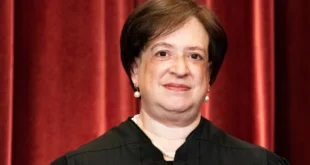Originally published by The 19th
In less than a month, most families with kids will be eligible to receive regular payments of up to $300 for each of their children. In the lead-up, the White House and community groups are launching a campaign to raise awareness for the most vulnerable families who are eligible for the money for the first time but will need to take extra steps to get it.
The funds will come in the form of the child tax credit, which was expanded in March for a year and amended so that families can receive the money in the form of monthly checks, instead of an annual lump sum. The amount available through the credit grew from $2,000 to $3,000 for kids ages 6 to 17 and $3,600 for kids under the age of 6. Monthly, that will come in payments of $250 or $300.
Crucially, the credit was also expanded so that the poorest Americans — people who don’t file income taxes — can get the full amount. That change alone has the potential of slicing child poverty in half, according to a study by the Center on Poverty and Social Policy at Columbia University.
Reaching those people is now the challenge ahead of the federal government.
Nearly 90 percent of families with kids — about 39 million households — don’t need to do anything to start receiving when the first payments go out on July 15. But those who don’t file income taxes, and therefore not known to the Internal Revenue Service, will need to apply through a new portal that was just created last week.
That’s why the White House is launching a Child Tax Credit Awareness Day on Monday, a “day of action” to help make families aware of the credit expansion and inform them of what they need to do to receive it.
Much of that work will be focused on reaching marginalized communities that would most benefit from the funds and getting them to sign up through the new portal, though community organizers anticipate significant barriers to that sign-up process: The portal isn’t available in a mobile version, for example, even though low-wage people are far more likely to own a smartphone than a computer.
“To have this not be as mobile friendly as possible — that’s unfortunate,” said Joanna Ain, associate director for policy at Prosperity Now, a nonprofit that works with community organizations that help people build assets and wealth. “Libraries are starting to open, but that’s not always available for folks.”
The day of awareness is sorely needed, Ain said, to help ensure as many eligible people as possible sign up for the money. How successful that outreach effort is will define the success of the expansion as a whole, particularly as conversations are ongoing on Capitol Hill about making the one-year change to the child tax credit permanent.
“These programs are so powerful because [for most people] you don’t need to sign up to get the child tax credit outside of doing your taxes,” she said. “Folks know what to do with the cash. They need food, they need clothing … [But] They don’t need barriers.”
For those who may be eligible for the funds, go here to find out what you need to know, according to the IRS.
 Poli Alert Political & Civics
Poli Alert Political & Civics



